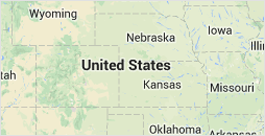Eldon Broady
PHONE NUMBER : -----------
Map

Is GraphQL a programming language?
Software technology is continually evolving and becoming more intuitive, innovative, and amazing. If you're in the tech industry, you're likely staying on top of many trends and one of the latest popping up is GraphQL. So you've probably heard of GraphQL, but what exactly is it? Is it a programming language? A development platform? The truth is, it's a lot of things! In this article, we'll describe some of the primary uses for GraphQL and how it's changing the landscape of the software industry.
The Many Uses of GraphQL
When you're talking about GraphQL, the three most common ways to describe it are:
- A query language
- An execution engine
- A specification
But what do these mean? Let's talk about it.
As a query language, GraphQL is especially useful because it only returns the exact, relevant data that a client requests on a consistent basis.
It also functions as an execution engine. GraphQL servers have a strong schema and resolvers that process queries that clients make. The schema is able to define the query and only return the requested fields. The resolvers process these and return the solutions to the client.
Finally, GraphQL is an open specification. This means that, although it runs on specific rules about syntax, what constitutes a query, and the schema operations, it allows developers to choose how they want to store data and what programming language they want their server to be built on. This is one of the main reasons GraphQL is so unique and useful. It makes it easy for developers to create implementations in any language of their choice and utilize GraphQL on their server.
GraphQL is Changing Application Development for the Better
GraphQL is a new and exciting technology that is helping companies evolve the way they build their applications. The myriad of possibilities that it allows for should not be overlooked by any company looking to evolve the way they create applications. Many companies can even build a GraphQL layer on their existing applications and gain the performance and efficiency benefits from it. In short, GraphQL is changing application development for the better.
Author Resource:-
Eldon Broady writes about database technologies, graph database, and modern API tools. You can find his thoughts at GraphQL blog. For more information about golang cache, check out this site.
